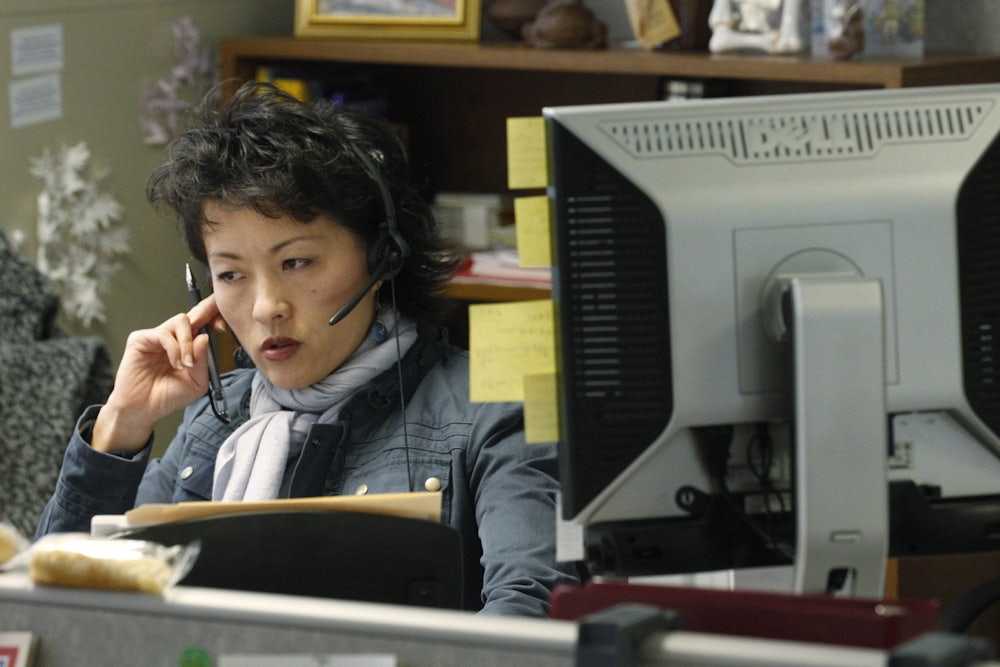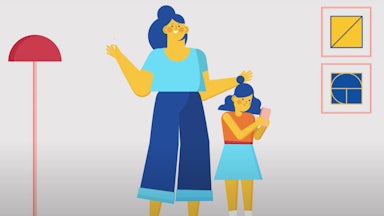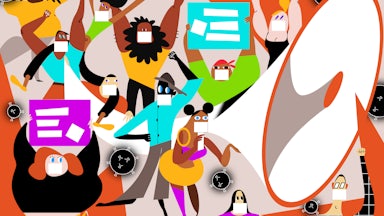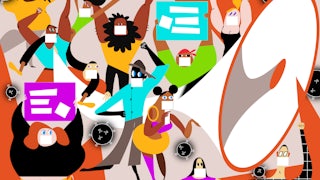Billy Constable has spent the better part of five years having very hard conversations on the phone.
As part of Lines for Life, a nonprofit 24/7 crisis hotline based in Portland, Oregon, Constable was one of over 200 workers offering emotional support, treatment referrals, and crisis de-escalation for people in the throes of immense pain. Taking calls from the National Suicide Prevention Lifeline and county-level crisis numbers, Lines for Life runs several hotlines offering support for things like behavioral health, alcohol and drug abuse, and youth, senior, and veteran services. Constable started as a volunteer in 2017 before being hired as a crisis intervention specialist and, later, a team lead, all while getting a master’s degree in social work. The work was hard and often draining, but he found it rewarding.
Then March 2020 rolled around, and the work became a different beast entirely. “For the last few years, it’s just felt really reactive, and people are scrambling around,” Constable, who left Lines for Life after we spoke in December, told me. Many of his former coworkers feel the same. “Because of the exponential amount of calls coming in, it’s becoming back-to-back days of traumatic calls,” said Rebecca Ryan Roberts, a crisis intervention specialist at Lines for Life.
On January 5, the staff at Lines for Life, including crisis intervention specialists and case managers, announced that the majority of the organization’s 160 eligible workers had signed cards to form a union affiliated with Oregon’s American Federation of State, County and Municipal Employees, or Oregon AFSCME, with an official vote set for February.
The Lines for Life union is part of a wave of labor organizing happening in health care in response to the pandemic, reaching far beyond Oregon. Telehealth has experienced a massive boom in recent years, which has only intensified since Covid-19 struck. Remote health care promises flexibility and safe distance for both the patient and the worker, but at the same time, there aren’t very many guaranteed protections for either party. App-based mental health care providers like AbleTo and BetterHelp have been criticized for unstable employment practices; several San Francisco-based AbleTo caregivers, for instance, reported being abruptly fired in late 2020, only to be reoffered their previous jobs—part-time, with no benefits. This is obviously bad for caregivers, but their patients also suffer from the abrupt separations that result. Meanwhile, crisis line specialists like those at Lines for Life have struggled with a lack of technical assistance and insufficient emotional support to address the second-hand traumas of the job.
The workers at Lines for Life hope that their union could change that and address issues with understaffing and high turnover. (Lines for Life declined to comment.)
“Lines for Life represents an important organizing step, specifically in telehealth,” said Eddie Charlton, an organizer for Oregon AFSCME who is helping with the nascent union. “We are moving in a direction of the future with a lot more services like what Lines for Life provides, given the trends we’re seeing in health care. Because of that, there’s a lot of valuable lessons to learn from how they’ve organized there.”
As people struggled with the new realities imposed by Covid-19, crisis helplines nationwide saw a huge increase in calls. One study found that six weeks after the initial outbreak, crisis lines saw a 35 percent increase in calls compared to pre-pandemic levels.
Things were no different at Lines for Life, which has expanded rapidly over the past two years. “The number of calls went up. The acuity of calls went up. And the organization also started taking on more contracts, too,” said Constable.
Staring down an unknown future, anxiety and depression gripped many, with a particularly pronounced impact on people of color and the LGBTQ community. Meanwhile, social distancing and shelter-in-place orders intensified loneliness and relationship troubles. The Centers for Disease Control and Prevention reported increases in substance abuse and overdoses since the onset of the pandemic as well. Physical health and economic uncertainty were some of the most common causes of anxiety. “I’ve taken a lot of calls and heard or helped out on a lot of calls where the person’s problem can be solved if someone just gave them a thousand bucks,” said Constable.
Crisis intervention workers play a key role in addressing Americans’ mental and behavioral health struggles, although they remain underrepresented in health care unions. Most of the people who work the Lines for Life hotlines are licensed social workers and counselors, while others have lived experience with mental health and substance abuse struggles. Helping people find the resources they need can be meaningful, but the work can also lead to compassion fatigue and secondary traumatic stress. “When you’re faced with that much trauma and feeling like you’re not able to help someone out, it starts to build some moral injury within yourself,” said Constable.
There are peer support groups for first responders, but for the most part, Lines for Life workers find support and care within their community. “It is very intense work. The main support that I get is from my coworkers,” said Roberts.
After the pandemic hit, though, finding community among coworkers became much harder. Like many other Americans, crisis intervention specialists now do their work remotely all across the country, from Oregon to Tennessee to Florida. As some workers took advantage of new flexibility, the organization began to hire others from out of state. Lines for Life, which normally offered good benefits and paid time off, started running into trouble covering mental health care for out-of-state workers, offering plans that were limited or entirely unavailable in certain states, employees told me. The people who were spending all day helping others in emotional distress couldn’t access those same resources for themselves.
Patchy health coverage wasn’t the only byproduct of the nonprofit’s swift growth as it took on more contracts and added more hires. In the same way that so many workers fumbled with Zoom calls and poor WiFi connections, crisis line specialists had to adapt to new technology. Lines for Life workers have asked for 24/7 IT support, but the nonprofit has been slow to respond. “It seems like the phone system breaks in new ways every week,” said Constable, who, as a team leader, often has to figure out tech support on his own.
“This isn’t just for the workers. This is for the callers and the organization as a whole,” Constable pointed out. A glitchy Zoom feed or a disorganized Slack channel can mean more than frustration and delay. A dropped call in the middle of a serious episode can put someone’s life at risk.
Perhaps in a different era, the workers would have accepted these changes as just another difficulty in an already trying profession. But, bolstered by a year of organized labor activity and the high-profile demonstrations during “Striketober,” the Lines for Life workers saw a new path forward. On the national stage, thousands of nurses and other workers at Kaiser Permanente gained widespread media attention as they prepared to strike in November over contract negotiations (union representatives eventually came to an agreement with the health care giant in the eleventh hour.) Other major health care strikes cropped up in Massachusetts, where 700 nurses at St. Vincent Hospital stopped working in March, and in New York, where 2,000 health care workers at Mercy Hospital in New York went on strike for five weeks beginning in October.
Closer to home for the Lines for Life workers, 61 crisis responders at Lifeworks NW Hawthorn Walk-In Center, a mental health and addiction center in Hillsboro, Oregon, formed a union with Oregon AFSCME in June. It was just one behavioral health care provider to do so in recent years as part of a larger push by AFSCME to improve conditions for behavioral health workers, a campaign the union calls United We Heal.
Now, it seems like “unionization is more of an accessible idea for people who haven’t thought about it before,” said Roberts. Long after the evening rounds of applause for essential workers and celebratory posters on hospital walls disappeared, health care workers are demanding more than symbolic gestures of support.
For the time being, Lines for Life union members are hoping for voluntary recognition. Until then, they’ll be manning the phones, waiting for the next call.
* This article has been updated to reflect that Lines for Life declined to comment, and to clarify when Constable and Roberts worked at the company.










